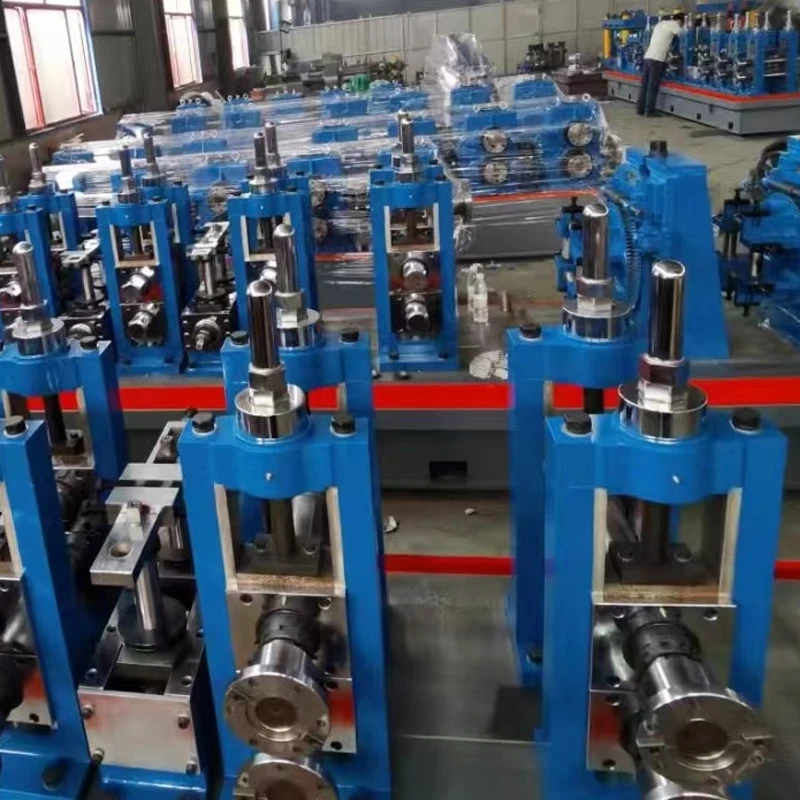Optimizing Tube Mill Machine Processes for Enhanced Production Efficiency
The Tube Mill Machine Process An Overview
The tube mill machine process plays a crucial role in the manufacturing of various cylindrical metal products, widely utilized across multiple industries, including automotive, construction, and aerospace. This sophisticated process allows for the efficient production of tubes and pipes, using various materials, primarily steel. Understanding this process is essential for manufacturers aiming to optimize production and achieve high standards of quality.
The Function of Tube Mills
At its core, a tube mill machine is designed to process flat metal strips or sheets by rolling and welding them into tubular forms. The primary components of a tube mill include a decoiler, forming stations, welding equipment, and a cutting machine. The process begins with the feeding of a flat strip of metal into the decoiler, which unwinds the material and prepares it for further processing.
Steps in the Tube Mill Process
1. Uncoiling The flat metal strip is uncoiled from a roll and passed through a series of forming stations. 2. Forming In this stage, rollers shape the flat strip into a tube-like structure. Various rollers are arranged in a sequence to gradually bend the strip until it closes into a circular form. The precision of this forming process is critical, as it determines the uniformity and roundness of the final product.
3. Welding Once the tube is shaped, the edges of the metal strip are brought together for welding. This is typically accomplished through high-frequency induction welding or laser welding. The welding technique used depends on the material and the intended application of the tube. Induction welding, for instance, is commonly employed for its speed and efficiency, yielding strong, high-quality welds that are essential for the structural integrity of the tube.
4. Cooling Following the welding process, the newly formed tube is cooled to stabilize its shape and properties. This step is crucial for preventing warping and ensuring that the tube meets the specified dimensional tolerances.
tube mill machine process

5. Cutting Once cooled, the continuous length of tube is cut into specific lengths according to customer requirements. Automated cutting systems ensure precision and consistency in the final product, minimizing waste and maximizing efficiency.
6. Finishing The final stage of the tube mill process involves surface finishing treatments, such as polishing or coating. These treatments can improve the tube's corrosion resistance, enhance its aesthetic appeal, and contribute to its overall durability.
Material Considerations
The type of material used in the tube mill process significantly influences the final product's properties. Stain-resistant steels, carbon steels, and even aluminum can be utilized, each providing different advantages. Manufacturers often select materials based on factors such as strength requirements, weight considerations, and cost-effectiveness.
Applications and Industry Impact
The applications of tubes produced by the tube mill process are vast. They are integral to the automotive industry for manufacturing exhaust systems, chassis components, and fuel lines. In construction, these tubes serve as structural supports and framework elements. Additionally, the aerospace sector relies on high-quality tubes for various components, ranging from fuel lines to structural parts.
Conclusion
The tube mill machine process is a vital manufacturing technique that combines precision engineering with efficient production methods. As industries continue to evolve, advancements in tube mill technology will likely enhance capabilities, improve efficiency, and contribute to the production of higher-quality products. Manufacturers who understand and optimize this process will stay competitive in today's fast-paced market, meeting the ever-increasing demands for strong, durable, and reliable tubular products.
-
High Frequency Straight Seam Welded Pipe Production Line-BzZhou Xinghua Machinery Equipment Manufacturing Co., LTD.|line pipe steel&welded gas pipeNewsJul.30,2025
-
High Frequency Straight Seam Welded Pipe Production Line-BzZhou Xinghua Machinery Equipment Manufacturing Co., LTD.|High Precision&Automated SolutionsNewsJul.30,2025
-
High Frequency Straight Seam Welded Pipe Production Line - BzZhou Xinghua Machinery Equipment Manufacturing Co., Ltd.NewsJul.30,2025
-
High Frequency Straight Seam Welded Pipe Production Line-BzZhou Xinghua Machinery Equipment Manufacturing Co., LTD.|Precision Welding, High EfficiencyNewsJul.30,2025
-
High Frequency Straight Seam Welded Pipe Production Line|BzZhou Xinghua|Precision Welding&EfficiencyNewsJul.30,2025
-
High Frequency Straight Seam Welded Pipe Production Line - BzZhou Xinghua|Precision Engineering&EfficiencyNewsJul.30,2025


